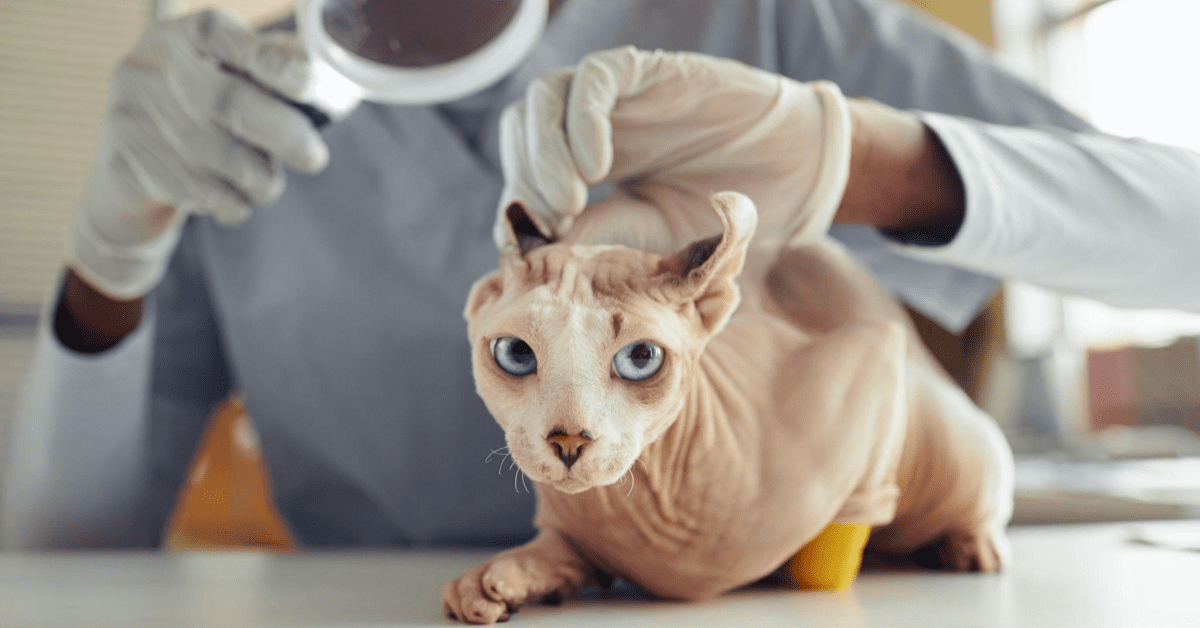No pet parent wants to be in a position where they can’t afford the care their pet needs. It’s stressful, scary, and something we all want to avoid. However, it happens to more people than you think – so if you’ve found yourself in this position, don’t be too hard on yourself. The important thing is that you’re searching for the best path forward for you and your pet.
If your pet needs emergency veterinary care and you are faced with a high vet bill that you need help to pay, here are a few options available to you.
1. Ask the veterinary hospital what payment options are available.
Your veterinary hospital wants to help you afford the care your pet needs. This means they will likely offer a variety of payment options including debit or credit cards, checks, or a payment plan which allows you to spread payments over a period of time.
2. Discuss the recommended treatment plan with your veterinarian.
The best case scenario when your pet is sick or hurt is that you can say ‘yes’ to all your veterinarian’s recommendations. However, when cost is a concern, veterinary staff can work with you to discuss the treatment plan and see if there are any ways they can ease the costs by modifying the diagnostic and treatment selections. While no one in the equation wants to compromise on care, veterinary staff understand that this is sometimes necessary for financial reasons.
3. Utilize a savings account, if available.
If you do have funds available in savings, using that resource can help you pay for your pet’s care and avoid going into debt. If you have the money available in savings but it would be difficult for you to use it all at once, you can talk to your veterinarian about a possible payment plan to spread the payments over time.
4. Seek out low-cost clinics or no-cost clinics.
Seeking out a low-cost clinic or no-cost clinic is another good option. There are a host of veterinary clinics across the nation that offer affordable services from spaying and neutering to urgent care. The ASPCA and The Humane Society have nationwide networks that offer help to low-income families, and individual veterinary practices often have their own local aid programs. It never hurts to ask your vet what your options are, as they will be more knowledgeable about resources in the surrounding area.
5. Inquire at local veterinary colleges about lower-cost care options.
Many veterinary colleges have programs that offer expert care at a lower cost so that veterinarians in training can gain the experience they need. This option may be especially helpful for pets who need specialized or experimental medical treatment. Ask your veterinarian about this option, as they may have connections at local colleges and beyond.
6. Seek help from nonprofit organizations.
There are many non-profit organizations that offer emergency veterinary funding to help pet parents in times of need.
- Brown Dog Foundation – A 501c3 public charity that provides funding for sick pets’ treatment
- Frankie’s Friends – A non-profit whose mission is to save pets with cancer and other life-threatening conditions
- Magic Bullet Fund – Helps pets receive crucial medical treatment that their family cannot afford
- New York Second Chance Rescue – NYSCR has a community outreach program for families in financial need where they receive applications to assist with funding emergency veterinary care
- Paws 4 A Cure – A 501c3 organization providing financial assistance for veterinary care
- Pets of the Homeless – An emergency care program to help pets of the homeless get urgent and lifesaving veterinary care
- RedRover Relief – This is a hub with information for individuals seeking emergency financial aid
- The Mosby Foundation – A fund for qualified limited-income pet parents
- The Onyx and Breezy Foundation – Funding and support for pets of families experiencing financial hardship
- The Pet Fund – 501(c)3 organization that provides financial help for pets who need non-basic, non-urgent care such as ongoing cancer treatment or heart disease treatment
Some organizations offer breed-specific or condition-specific financial assistance, so be sure to search your dog or cat’s breed or condition as part of your own research.
7. Use a credit card or payment plan.
If financially viable for you, you can use a credit card to pay your vet bill upfront, and then pay that amount off at a later date.
You might also consider a payment plan, whether offered by the veterinary hospital or by a third-party provider, this can be helpful as it allows you to spread a large payment over a longer period of time. This means you can pay off that lump sum in smaller, more manageable increments. Be aware that payment plans tend to accrue interest on the lump sum, so you may end up paying more overall in the long run. Having said this, it may be a price you are willing to pay in exchange for getting the care your pet needs.
8. Create a crowdfunding campaign.
When times are tough, sometimes leaning on friends, family, or your community for financial help is the best option. Starting a crowdfunding campaign that your circle can donate to can be a great way to do this. Many pet parents do this through social media, but there are also dedicated fundraising platforms to help you.
Here are some platforms that pet owners commonly use for crowdfunding campaigns:
9. CareCredit
CareCredit is a healthcare credit card that you have to apply for. It doesn’t function like a regular credit card in that you can only use it to pay for out-of-pocket medical expenses. The card allows you to pay for those expenses in installments over a determined period of time, which can be 6, 12, 18, or 24 months.
While CareCredit is a way to help you pay for a sudden vet bill, be wary that CareCredit will charge interest on the amount you owe if you do not make the minimum monthly payments and/or you do not pay off your total balance at the end of the agreed term.
CareCredit may help you afford the care your pet needs, but it may not always be the best financing option. Remember that you have to apply for CareCredit, and it has to be an accepted form of payment by your veterinarian.
For any financing option, we recommend researching the company thoroughly and reading through customer reviews on trusted websites as well as the Better Business Bureau.
10. ScratchPay
ScratchPay is another financing solution that offers different types of payment plans for medical expenses, including veterinary bills. You apply on their website, and then you will be able to see the payment plans available to you with their corresponding payment frequency, the total number of payments, and the interest rate.
Again, for all financing options, we recommend you research the company thoroughly and read through customer reviews on trusted websites as well as the Better Business Bureau.
While you weigh these options, remember that your veterinarian is your pet’s best advocate. Before diving into any difficult decisions, we urge you to explain your situation to your vet as they may be able to come up with a treatment option or payment plan that can alleviate some of your financial burden.
Above all, remember your situation is not unique and you are not alone. The simple fact that you landed on this article means you are taking steps to do the best you can for your pet – and one of these resources can help.
FAQs
What can I do now to financially prepare for my pet’s future vet care?
Most pets will need some kind of emergency vet care over their life, and it pays to be prepared financially when they do.
Enrolling your pet in a pet insurance plan as soon as they are eligible will help ensure that you have a financial safety net if unexpected accidents or illnesses happen in the future. Pet insurance works by reimbursing you for a portion of your pet’s eligible medical bills. You would pay upfront for your pet’s care, then submit a claim for the care to your insurance provider. Your insurance provider processes the claim, and if the claim is approved, they will reimburse you for the eligible expenses.
If you can’t afford the recurring cost of pet insurance, it pays to research financial assistance options just as you are doing now. Accidents and illnesses can happen to our pets when we least expect it, so if you can’t get your pet insured, it’s always good to have a backup plan. This way, you’re less likely to be caught off guard and have to make a difficult decision in a limited amount of time.
How much does caring for my pet cost?
Having a pet is a big financial commitment when you take into account all the costs. While this list may not cover all of the costs, here are a few of the big ones:
Expected care costs
When you have a dog or cat, there are certain costs that you will expect to pay over their lifetime. This includes things like preventive care services to help them stay in tip-top health. These would all be considered expected care costs:
- Dog food or cat food
- Toys
- Microchipping
- Spay/neuter procedure
- Vaccines
- Flea and tick prevention
- Parasite screening
- Annual health checkups
- Grooming
- Regular dental cleanings
- Nail trimmings
- Travel and boarding
Annual wellness care is essential for maintaining your pet’s overall health and happiness. That’s why we created Pumpkin Preventive Essentials, a wellness package that covers three crucial wellness services on every veterinarian’s list: an annual wellness exam, annual vaccines, and yearly screening tests for parasites. Preventive Essentials isn’t insurance, but it’s an optional add-on for any Pumpkin plan.
Unexpected care costs
In addition to the care you anticipate giving your pet over their life, some expenses pop up when you least expect them. For the majority of pet owners, the number one source of unexpected costs will be veterinary visits for accidents or illnesses, which may include:
- Hospitalization
- Surgery
- Emergency care
- Diagnostic testing
- Specialized treatment
- Rehabilitation therapies
- Prescription medications
These costs can often add up to thousands of dollars. For example, the average cost of surgery to remove a foreign object from a dog’s stomach may range from $2,000 to $3,500.
With Pumpkin Pet Insurance plans, all pet parents have the option to get 90% cash back on eligible veterinary bills. This can be a huge relief when pets need emergency care for critical accidents or life-threatening illnesses.
No pet parent can know what’s around the corner. While we hope and do our utmost to make sure our pets stay happy and healthy their whole lives, sometimes the unexpected does happen. In those times, it’s priceless to know you have help saying ‘yes’ to the care your pet needs.




